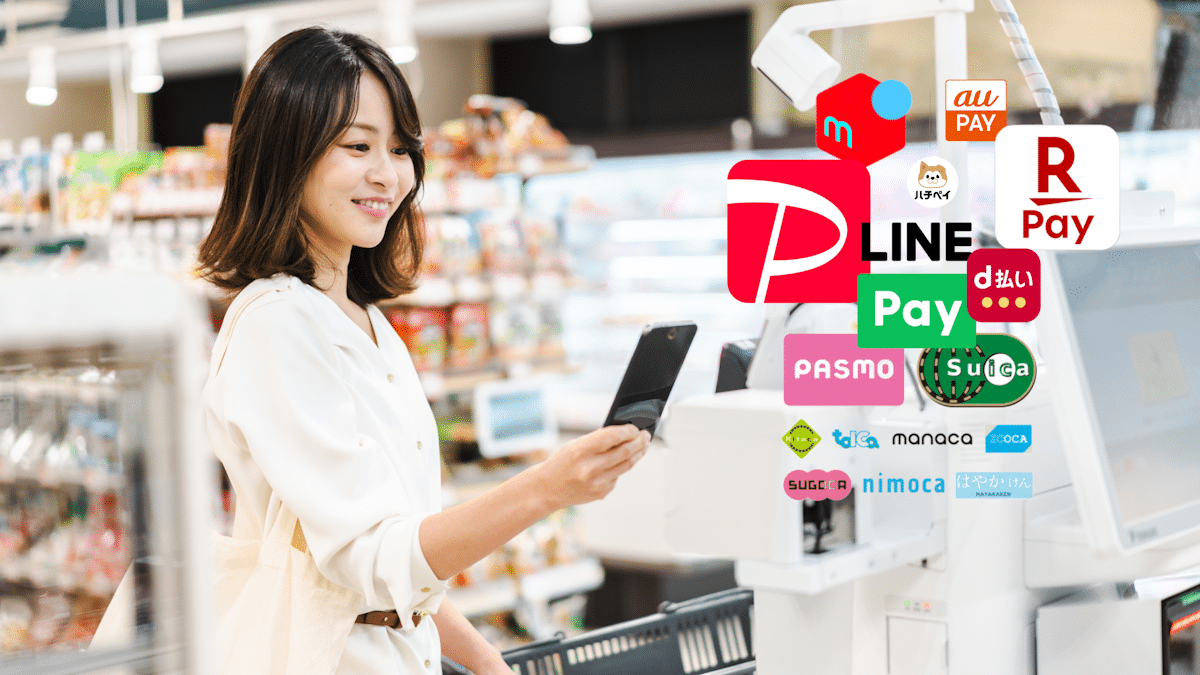One of the more pressing concerns when visiting or living in Japan is: how do you pay for things? Not too long ago, the most ready answer was cold, hard cash. But a sharp move towards contactless payments has fostered a dizzying array of options. Here’s a rundown of the options available – and how ubiquitous they are – for both tourists and residents.
Table of Contents
ToggleThe rapid advancement of cashless payments

Back when we first started UJ, I wrote about cashless payments in Japan. The status back then in 2018 was…well, less than good. Japan was clearly behind most of the rest of the world – particularly South Korea and China – in contactless payments. Credit card usage was low and cash was king.
That changed rapidly in 2018 with the introduction of the mobile payment app PayPay. Combined with a certain public health crisis that necessitated reducing human contact, cashless in Japan accelerated rapidly.
Maybe too rapidly. As cashless payments increased, so did the number of ways to pay cashless. The country saw an explosion of solutions, to the point that some stores find themselves supporting over two dozen ways to pay. And that’s not an exaggeration:
Jay Allen on Twitter: “Me in 2019: Japan needs to move to cashlessJapan: ****massively overcompensates**** https://t.co/tFhDVqu88P / Twitter”
Me in 2019: Japan needs to move to cashlessJapan: ****massively overcompensates**** https://t.co/tFhDVqu88P
Despite this proliferation, though, only around 36% of all payments in Japan are cashless as of 2022. And while many stores accept payment methods popular in other Asian countries, many of the native payment methods aren’t accessible to visitors. Contrast this to China, where cashless use is high and many cashless payment methods now support attaching a non-Chinese bank account.
The three types of cashless in Japan

I’m going to discuss the various types of cashless payments a little out of order. I’ll introduce the ones that tourists can use first and then cover which ones are available to residents. In both cases, I’ll list each option by how many stores accept that form of payment, from greatest to least.
Planning a trip to Japan? Get an authentic, interpreted experience from Unseen Japan Tours and see a side of the country others miss!

"Noah [at Unseen Japan] put together an itinerary that didn’t lock us in and we could travel at our own pace. In Tokyo, he guided us personally on a walking tour. Overall, he made our Japan trip an experience not to forget." - Kate and Simon S., Australia


Keep all you devices connected in Japan - rent a pocket wifi device! Available for hotel pickup or delivered to your airport. Fast speeds and backed by excellent customer service. (Note: Affiliate link - Unseen Japan earns a commission if you make a purchase.)
In general, there are three forms of cashless payment to consider. The first is credit cards. I’ll have more to say about these – and how many stores support them – below.
The other two forms of cashless are electronic money (電子マネー) and mobile payment or smartphone payment (モバイル決済;スマホ決済). Both of these use your smartphone but differ slightly. Electronic money requires maintaining a prepaid balance on your phone. Mobile payment allows prepaid charging but also provides the option of paying later.
The two methods also differ in how the transaction is processed. Mobile payment generally requires a cellular network connection to process the transaction. If the network’s down, you can’t make a payment. By contrast, electronic money payment will work even in areas with poor reception or during a network outage.
Cashless payment options for everyone (even tourists)
With that introduction done, let’s look at the best cashless payment options for everyone, including short-term visitors. After that, I’ll dive into the ones accessible to you if you’re a resident.
Credit card
Statistically the most used form of cashless payment in Japan. According to Japan’s Ministry for Economy, Trade, and Industry (METI), credit accounted for 93% of all cashless payments in 2022. That’s a big jump from 2016 when only 53.9% of all cashless transactions were by credit card.
If a store accepts any form of electronic payment, credit cards are likely to be on that list. That said, you’ll still run across small stores that won’t accept cards due to the high transaction fees. For these cases, it’s good to have cash on hand or a balance on a transportation card (discussed below).
Another drawback of credit cards: You generally won’t be able to tap to pay with your foreign credit card using Apple Wallet or Google Wallet. That’s because most contactless payment in Japan works through Sony’s FeliCa IC chip, a local invention with limited support outside of Japan and a few other Asian countries.
An increasing number of stores support contactless credit card payment via the physical card’s IC chip. However, this is hit-and-miss.
Note that you can pay with Apple Pay or Google Pay using a supported local payment method. I’ll get into that below.
Transportation IC card

They’re more than just a method of boarding the subway or bus. Japan’s transportation IC cards – PASMO, Suica, ICOCA, TOICA, etc. – are also accepted as a method of payment at over 2.26 million locations throughout Japan. This includes every major grocery and convenience store chain and many restaurants.
What’s more, this is one of the easiest options to use for people who want to tap and go. You can add a virtual IC card directly to our Apple Pay or Google Wallet and charge it via a credit card in your wallet. To pay, you just tap your card, like any other Apple Pay or Google Wallet payment.
However, there are some clear downsides to using your IC card as your primary payment method, particularly if you’re a resident and not just a tourist.

